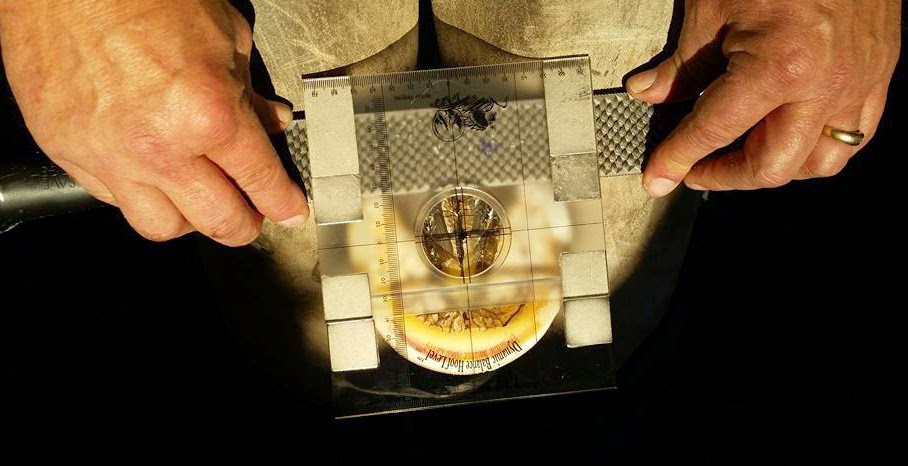In the late 1800’s, farrier professor William Russell offered many concepts on locating or visualizing the position of the distal phalanx within the hoof capsule. While Russell referenced many structures on the bottom of the foot, most farriers simply focused on the outer hoof wall. Russell felt that measuring back from the trimmed frog apex about ¾” (19mm) would put you in the center of the horses foot, and you could balance your trim or a shoe around that location. More recently, farriers David Duckett and Gene Ovnicek used similar references to define a “Center” point on the bottom of the foot, then balancing a trim or shoe around that point. David Farmillo from Australia, and many other farriers from around the world use sole references to balance the hoof capsule as opposed to using the outer hoof wall that can become distorted presenting a poor representation of its relationship to the distal phalanx. A common factor with all of these farriers is the use of the center of the foot, the foot's "Axis." Those farriers that use the Axis of the foot are less likely to be misled by the distorted hoof capsule. The majority of the "Experts" agree that balancing the foot around the distal phalanx and center of rotation of the DIP Joint offers the best solution for achieving consistent and repeatable balance.
Great! Now that the Experts can agree on balancing to the "Axis" of the foot how do we get farriers to do just that? Balancing around the axis as described by most means correct break over and heel placement. But what if we could establish balance around the axis on all required dimensions?
What if there was a way to achieve consistent and repeatable three dimensional balance of the hoof capsule to the axis of the internal foot.
Over the years the farrier has been offered many tools to help them achieve balance, but none address true three dimensional balance. The "T" Square addresses distal/proximal balance on the medial/lateral plane, but does not offer reference of distal/proximal balance on the dorsal/palmar plane. The "Protractor"offers a distal/proximal reference on the dorsal/palmar plane. Dorsal/palmar and medial/lateral balance are still left to the discretion of the trimmer.
Follow any thread discussing balance and you will find that regardless of the method used to achieve balance ultimately no definable plane of balance is referenced. It is no wonder that consistency and repeatably is non existent. Refer to my blog post "Trim, Trim, oops, Trim".
That is all about to change. For over a decade I have taught trimmers how to achieve balance by referencing a plane established about the axis of the internal foot, using land marks on the sole of the hoof. There are many farriers that have developed techniques for defining the axis of the foot, and suggesting that the farrier balance around this point. Where my teaching differs is that I teach the trimmer to envision a plane represented by land marks around the axis. This technique has worked well for over ten years with numerous radio-graphic studies and dissections confirming the techniques ability in achieving consistent balance of the hoof capsule to the internal foot. The difficulty has been in teaching the trimmer to visualize the plane of reference. Over the past year I have developed a tool that solves this problem. I have recently introduced the Dynamic Balance Hoof Level. A hoof level that will change how dynamic balance is achieved.
The Dynamic Balance Hoof Level was developed after nearly a decade of study. It provides a plane of reference that when followed achieves dynamic three dimensional balance of the hoof capsule to the axis of the internal foot. Recent studies indicate that achieving three dimensional balance about the axis of the foot supports symmetrical movement improving locomotion. The DBHL attaches directly to a farriers rasp. Three distinct planes are presented, the axis plane, the heel plane, and the toe plane. When the hoof is trimmed to the referenced axis plane, dynamic balance is achieved. A soon to be published paper references the importance of fore foot balance and the importance of balancing to the axis plane. The DBHL provides a reliable plane of reference for achieving accurate and repeatable balance. www.hooflevel.com


No comments:
Post a Comment